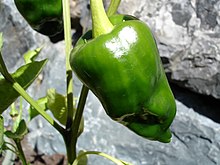
One of my favorite things to eat is a type of pancake made with mung beans called bindae duk. But the problem with making this at home is that you need mung beans, which you have to soak for several hours and then grind. So I don't make it very often. But then one day, I was at a Korean restaurant in London and they served a kind of pancake made with cornmeal that was very much like bindae duk. I thought that was brilliant: a quick, easy way to make bindae duk using a very common ingredient. In addition, they'd added baking powder which made the pancakes fluffy and light. I really liked that. Of course, pancakes made with corn aren't the same as pancakes made with mung beans, but when you have a craving, they're awfully close, and so wonderfully hearty and delicious. Here's my version of it.
Corn Pancakes á la Bindae Duk
About a cup of very roughly ground cornmeal
About a 1/4 cup of flour
1/2 teaspoon of salt
1 teaspoon of baking powder
1 egg
Add water to the cornmeal, just enough to barely cover. Let soak for two to three hours. Add flour, salt, baking powder and egg. The batter should be fairly thick, but still runny, so if it's too thick, add more water. If too thin, add more flour.
Heat a skillet. Add oil. Wait until the skillet is fairly hot. Then fry up pancakes — the size is up to you.
There's also a dipping sauce, but it's fairly simple: soy sauce and vinegar, the proportion up to you.
Eating these pancakes with just the dipping sauce is pretty satisfying, but it's so much more fun if you add things like kimchee, green onions, bacon, etc to the pancakes. Just remember that you're going to have to fry up these ingredients beforehand, especially bacon. That's fairly easy. Just fry the ingredients in the skillet until they're mostly cooked and then scoop some batter right on top. Just be careful when you flip the pancakes over.

